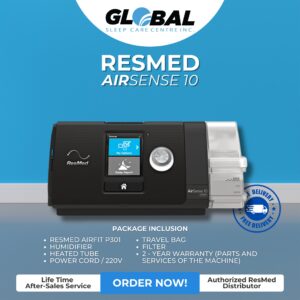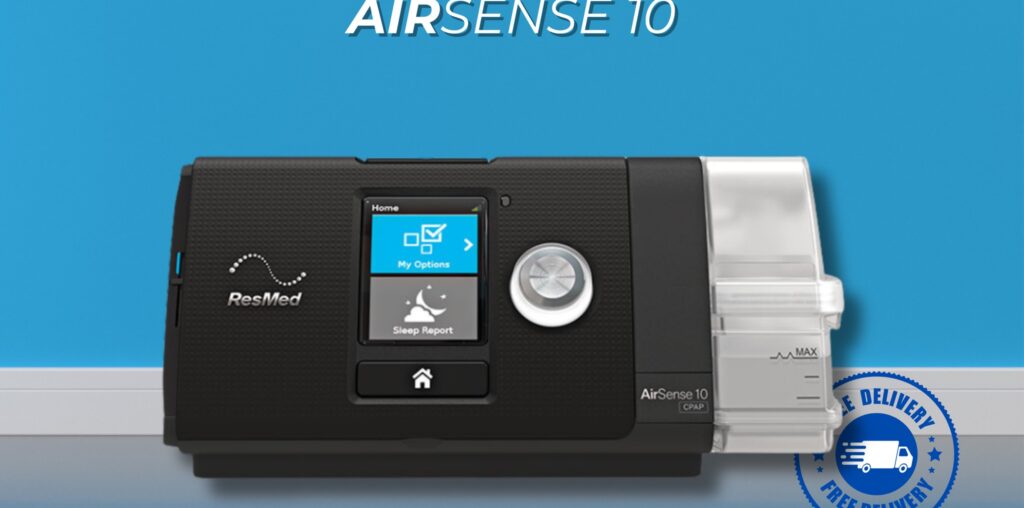Monitoring and Adjusting Therapy Settings
Joshua Descalso, January 16, 2025
Continuous Positive Airway Pressure (CPAP) and Bi-Level Positive Airway Pressure (BiPAP) machines have revolutionized the treatment of sleep apnea and other respiratory disorders. At the forefront of personalized sleep therapy is the Global Sleep Care Centre, dedicated to providing comprehensive solutions for improving sleep health. By delivering a steady stream of air to keep airways open, these devices mitigate symptoms like snoring, daytime fatigue, and cardiovascular risks. However, to maximize the efficacy of therapy, it is essential to monitor and adjust the machine’s settings based on individual patient data. Here, we explore how leveraging data from CPAP and BiPAP machines can fine-tune therapy for optimal outcomes.
The Importance of Data Monitoring
Modern CPAP and BiPAP devices are equipped with advanced sensors and connectivity features that record detailed data about therapy sessions. This data includes parameters such as:
- Apnea-Hypopnea Index (AHI): The number of apnea (complete blockage) and hypopnea (partial blockage) events per hour.
- Leak Rates: Air leakage around the mask, which can affect therapy effectiveness.
- Usage Hours: The duration of time the device is used, which reflects adherence to therapy.
- Pressure Levels: The actual pressure delivered during therapy, especially in auto-adjusting devices.
- Oxygen Desaturation Levels: For some advanced models, oxygen saturation during sleep is also tracked.
By analyzing these metrics, healthcare providers can assess the effectiveness of therapy, identify potential issues, and make informed decisions to optimize settings.
Common Therapy Challenges
Despite the efficacy of CPAP and BiPAP therapy, patients often encounter challenges that may reduce its effectiveness. These include:
- Mask Discomfort or Leakage: Poor mask fit can lead to air leaks, reducing therapeutic pressure and causing skin irritation.
- Pressure Intolerance: Some patients find the prescribed pressure settings uncomfortable, leading to low adherence.
- Residual Symptoms: Despite therapy, some patients may continue to experience daytime fatigue or snoring.
- Data Trends Indicating Suboptimal Therapy: High AHI readings or irregular pressure levels might signal the need for adjustments.
Leveraging Data for Fine-Tuning
To address these challenges and enhance therapy outcomes, data from CPAP and BiPAP machines can be used in the following ways:
- Adjusting Pressure Settings:
- Auto-Titrating Devices: Many modern CPAP and BiPAP machines are equipped with auto-titration capabilities. They monitor the patient’s airway in real-time and adjust pressure dynamically to prevent apnea and hypopnea events.
- Manual Adjustments: For fixed-pressure devices, data analysis can guide clinicians in fine-tuning the pressure based on trends in AHI and patient feedback.
- Mask Fit Optimization:
- Analyzing leak rate data helps identify mask-related issues. Clinicians can recommend alternative masks or adjust the current mask’s fit to minimize leakage and enhance comfort.
- Identifying Non-Adherence:
- Usage hours provide insight into adherence. If patients are not using the device consistently, clinicians can investigate barriers, such as discomfort or lifestyle factors, and offer solutions like mask changes or education on the benefits of therapy.
- Managing Residual Symptoms:
- Persistent symptoms despite optimal settings might indicate underlying issues such as central sleep apnea, coexisting medical conditions, or the need for advanced therapy modes like BiPAP or ASV (Adaptive Servo-Ventilation).
- Addressing Complex Cases:
- Advanced data, such as oxygen saturation levels, can identify patients who might benefit from supplemental oxygen or changes in therapy mode.
The Role of Connectivity and Remote Monitoring
The integration of wireless connectivity and cloud-based platforms has further enhanced the ability to monitor and adjust CPAP/BiPAP therapy. Patients and clinicians can now access therapy data remotely, enabling real-time adjustments and proactive intervention. Key benefits of remote monitoring include:
- Timely Interventions: Clinicians can detect and address issues early, such as high leak rates or low adherence.
- Enhanced Patient Engagement: Many platforms provide patient-friendly apps that display therapy progress, empowering patients to take an active role in their treatment.
- Streamlined Follow-Ups: Remote data access reduces the need for frequent in-person visits, making therapy management more convenient for patients and providers.
Educating Patients on Data Insights
Empowering patients with knowledge about their therapy data can significantly improve adherence and outcomes. Simple steps include:
- Explaining Key Metrics: Helping patients understand parameters like AHI and leak rates fosters engagement.
- Highlighting Progress: Demonstrating improvements in sleep quality and symptom reduction motivates continued use.
- Addressing Concerns Promptly: Providing avenues for patients to report issues ensures timely resolution.
The Future of CPAP/BiPAP Therapy
As technology advances, CPAP and BiPAP devices will likely become even more sophisticated, incorporating features such as artificial intelligence for predictive adjustments, enhanced biometric monitoring, and integration with wearable health devices. These innovations promise to further personalize therapy, reduce complications, and improve patient outcomes.
Conclusion
Monitoring and adjusting therapy settings using data from CPAP and BiPAP machines is crucial for achieving maximum therapeutic benefit. By addressing challenges such as mask fit, pressure intolerance, and residual symptoms through data-driven interventions, clinicians can optimize therapy for each patient. The Global Sleep Care Centre is committed to leveraging these advanced tools and providing personalized care to enhance sleep health for every patient. The integration of remote monitoring and patient education further enhances adherence and outcomes, ensuring that patients derive the full benefits of their therapy. As the field continues to evolve, the potential for individualized, data-driven care will only grow, improving the quality of life for millions worldwide.
Contact Us:
Call us today or email us to inquire further about our state-of-the-art diagnostic services. Get personal assistance from our caring healthcare team every step of the way to provide you the care quality that you deserve in this journey toward a better resting habit.
Address
2521,Centuria Medical Makati Kalayaan Ave. Cor.Salamanca St. Makati City
Contact Numbers
Globe: 0956 760 6016
Smart: 0939 919 2723
Landline : +632 8571 3072
References:
“CPAP Machines: Tips for Avoiding 10 Common Problems.” Mayo Clinic, www.mayoclinic.org/diseases-conditions/sleep-apnea/in-depth/cpap/art-20044164.
Pinto, Venessa L., and Sandeep Sharma. “Continuous Positive Airway Pressure.” StatPearls – NCBI Bookshelf, 24 July 2023, www.ncbi.nlm.nih.gov/books/NBK482178.
Sarver, Audra. “CPAP Pressure Settings.” SleepApnea.org, 7 June 2024, www.sleepapnea.org/cpap/cpap-pressure-settings.


